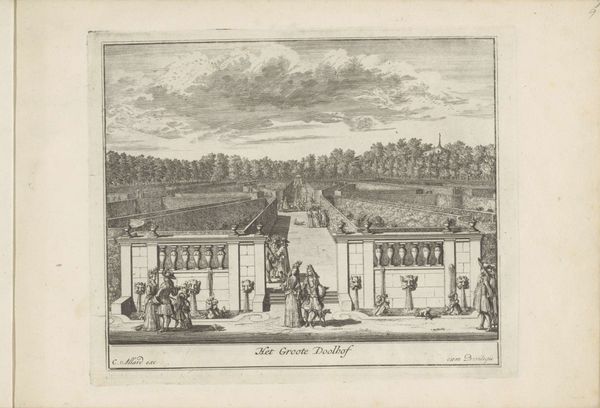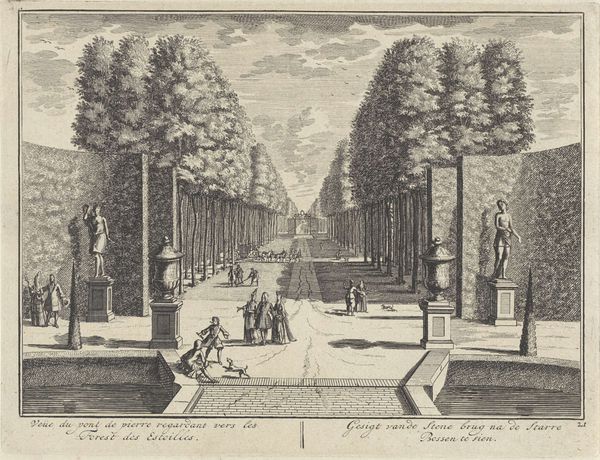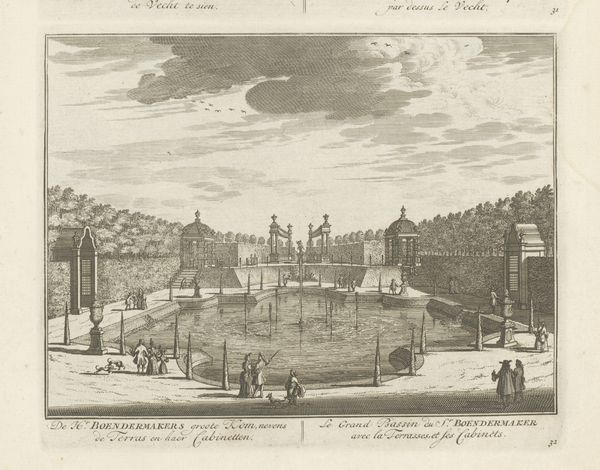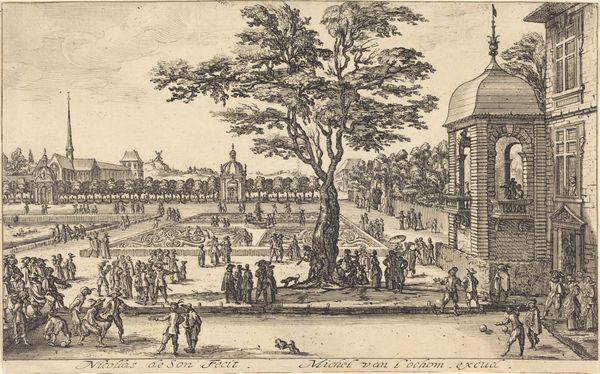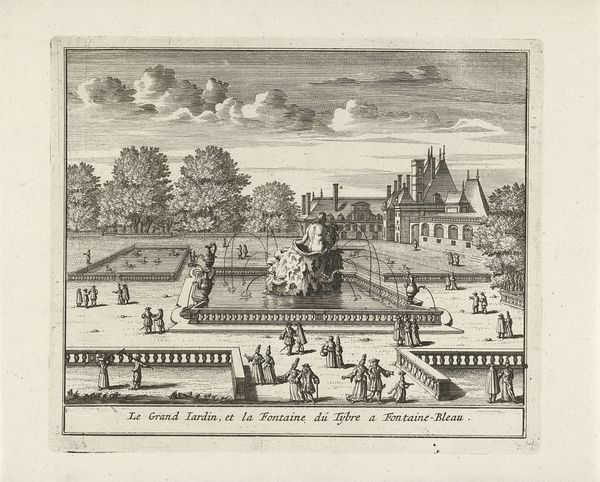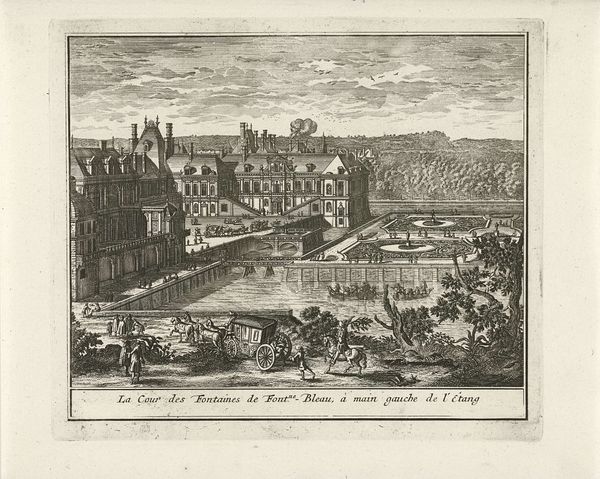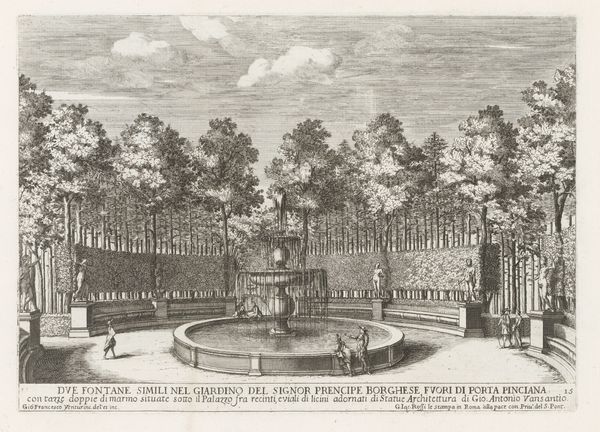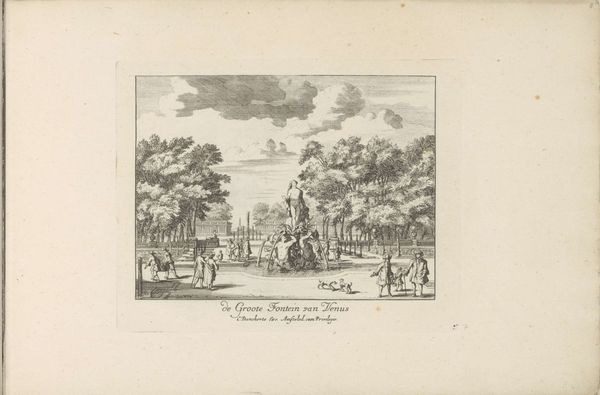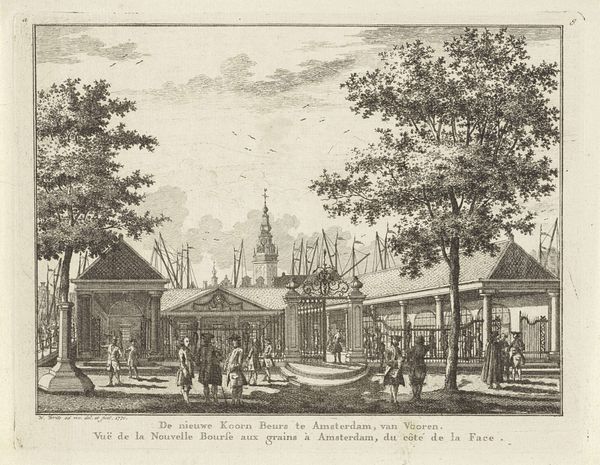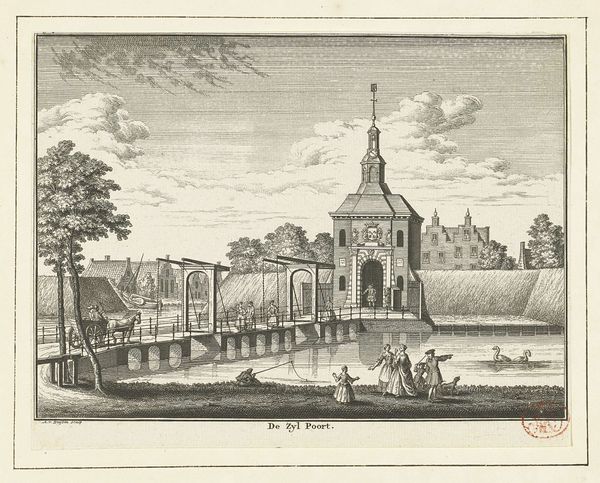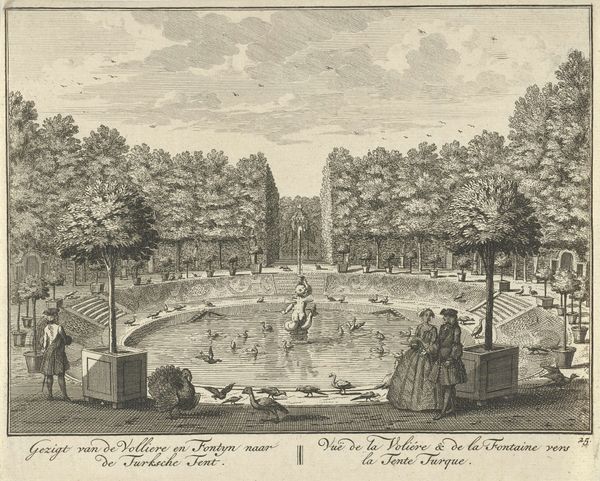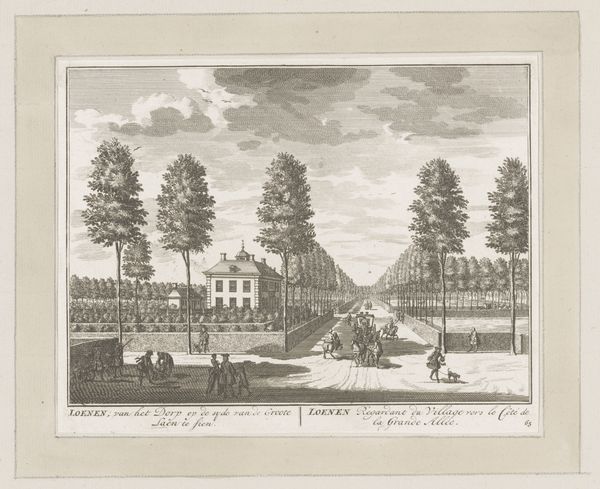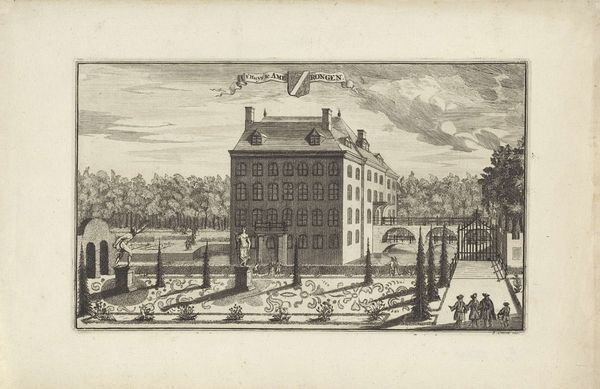
engraving
#
baroque
#
landscape
#
engraving
Dimensions: height 172 mm, width 206 mm
Copyright: Rijks Museum: Open Domain
This is Laurens Scherm’s rendering of the Fountain of Hercules in the garden of Paleis Het Loo, etched some time before his death in 1702. The palace, built in the late 17th century, embodies the ambitions of the Dutch Stadtholder William III, later King of England. Gardens in this era weren't just for leisure; they were powerful symbols of control and order. Scherm’s print captures the carefully planned symmetry of Het Loo, reflecting a desire to tame nature, much like the figures in the ruling class sought to organize society. The fountain itself, dedicated to Hercules, is more than just a decoration. Hercules, the mythological hero known for his strength and labors, can be seen as an allegory for leadership, and perhaps for William III's own aspirations. Look closely, and you’ll see people from different social strata strolling in the garden. What might their experiences have been? Were these gardens, designed to impress, also places of exclusion? Scherm’s print invites us to consider the complex relationship between power, representation, and the everyday lives of people in the Dutch Golden Age.
Comments
No comments
Be the first to comment and join the conversation on the ultimate creative platform.
